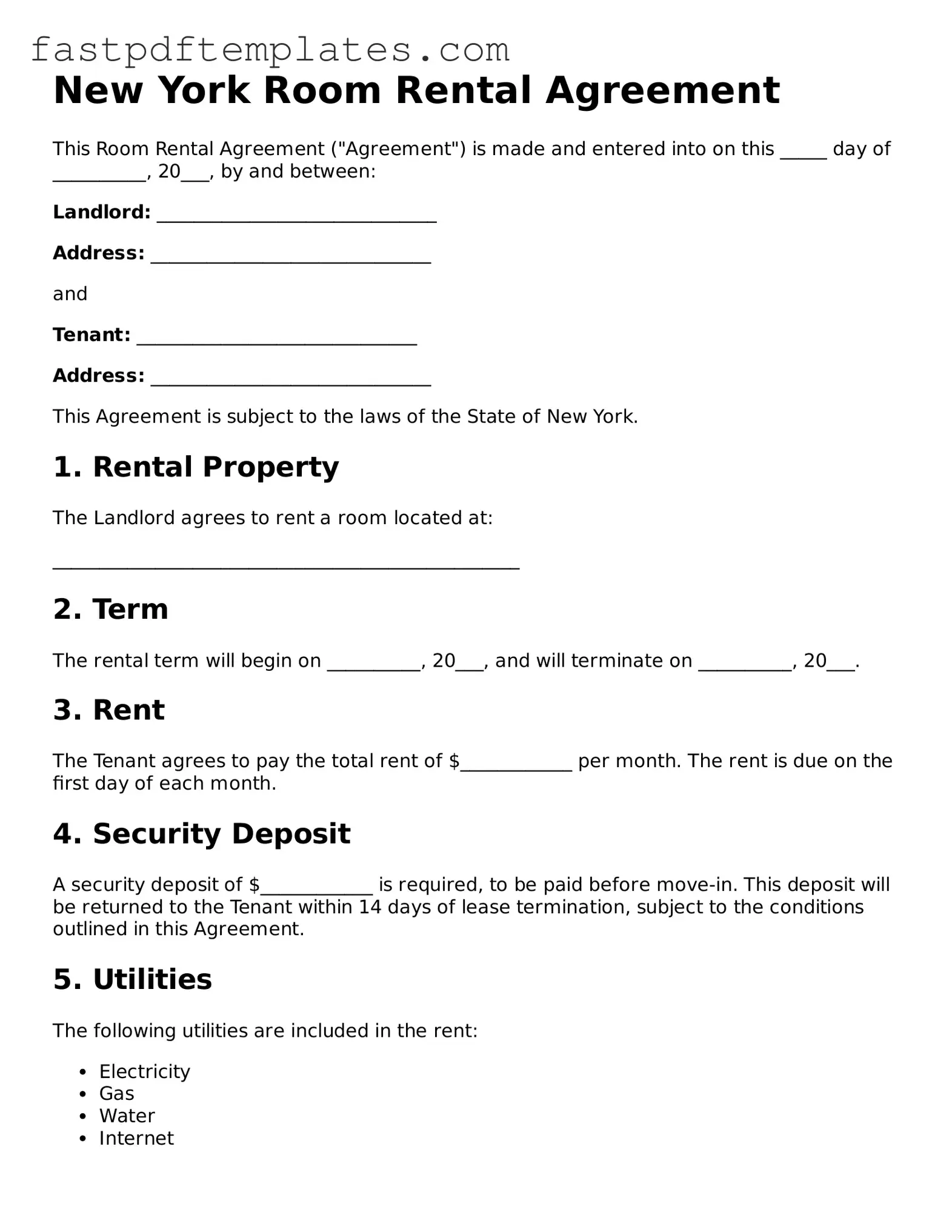New York Room Rental Agreement
This Room Rental Agreement ("Agreement") is made and entered into on this _____ day of __________, 20___, by and between:
Landlord: ______________________________
Address: ______________________________
and
Tenant: ______________________________
Address: ______________________________
This Agreement is subject to the laws of the State of New York.
1. Rental Property
The Landlord agrees to rent a room located at:
__________________________________________________
2. Term
The rental term will begin on __________, 20___, and will terminate on __________, 20___.
3. Rent
The Tenant agrees to pay the total rent of $____________ per month. The rent is due on the first day of each month.
4. Security Deposit
A security deposit of $____________ is required, to be paid before move-in. This deposit will be returned to the Tenant within 14 days of lease termination, subject to the conditions outlined in this Agreement.
5. Utilities
The following utilities are included in the rent:
- Electricity
- Gas
- Water
- Internet
Any additional utilities will be the responsibility of the Tenant.
6. Use of Property
The Tenant agrees to use the room solely as a residence and will not engage in any illegal activities on the premises.
7. Maintenance and Repairs
The Tenant will keep the room clean and in good condition. The Landlord is responsible for major repairs and maintenance issues.
8. Termination
Both parties can terminate this Agreement with a written notice of _____ days. The Tenant must vacate the property upon the termination date.
9. Governing Law
This Agreement shall be governed by the laws of the State of New York.
10. Signatures
By signing below, both parties agree to the terms outlined in this Room Rental Agreement.
Landlord Signature: ______________________________ Date: __________
Tenant Signature: ______________________________ Date: __________
